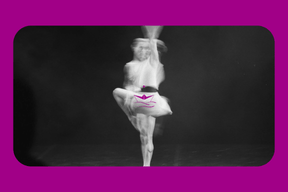Constantly Turning Inward, But How Far?
A journey from interoception to exteroception.
We’ve all come to grasp this fundamental hypothesis: when seeking to protect our well-being and understand ourselves, it's wiser to look inward rather than solely searching for problems or causes outside. If you wish to alter something in your life, turn inward. If you’re faced with a challenge, ask yourself. Delve deeper, look closer, and keep probing.
Indeed, what dwells within us will inevitably emerge outward!
Yet, as with all aspects of life, if we intentionally strive for balance and engage in practices that facilitate this, we can harmonize our perception, directing awareness both inward and outward. Though this equilibrium may not be static—often fluctuating—it frees us from becoming stuck in either extreme, too entrenched inside ourselves or too lost in the external world.
What do I mean? For instance, we encounter daily exhortations about the necessity of meditation, with its benefits continuously validated scientifically. However, alongside these advantages, it’s essential to acknowledge potential downsides. Often, we are inclined to interpret research from a one-sided perspective, overlooking the complexity. Meditation can be beneficial, harmful, sometimes problematic, and at other times deeply restorative.
But what if, in our inclination towards certain practices, we inadvertently amplify our imbalances?
Some individuals are inherently introspective, while others naturally lean outward; these tendencies can shift over time, revealing the fluidity of our states. Some may distinctly spend significant periods oriented outward or inward.
Dance, meditation or any practice; positioning every phenomenon solely from within oneself might seem valid in theory, but in practice, many situations may not unfold this way.
In dance, for instance, if we maintain an introspective focus, dancing as if no one else exists, we risk neglecting the social richness that comes through sharing and connecting. Consequently, we may find ourselves unable to dance as part of a community, potentially tightening up when observed. We might disengage from how others move and treat dance solely as a personal, insular activity. Over time, this may deprive us of experiencing the full spectrum of movement qualities since dancing only with ourselves can lead to a repetitive pattern.
Conversely, if we dance only for external views and influences, we may become oblivious to our inner signals and desires, exhausting ourselves in the process. In extreme cases, this detachment might even lead to injury, as we overlook the inherent wisdom of our body's movements by merely skimming over its outer surface.
On a different note, during partner dance practices, an overemphasis on meeting our partner’s needs can cause us to ignore our own body’s state, resulting in a loss of center and grounding within the work we do together. In striving to please our partner through our movements, we may risk losing the essence of our connection.
In Summary:
Within any practice—be it meditation, dance, yoga, or other forms—we can observe our prevailing tendencies. By identifying whether our inclinations are more introspective or extrospective, we can create practices that counterbalance an imbalance if necessary.
Indeed, an overly introverted approach can lead to a long-term sense of enclosure, particularly in the realm of dance. If we persist in an inward-focused practice, with our eyes deliberately shut to the outside world, we unnecessarily constrain our dance’s potential richness by limiting ourselves to what unfolds solely in our internal landscape.
So how might we cultivate awareness in our dance practices?
If We Find Ourselves in an Introverted Phase:
*If you often feel an inward pull—not from a joyful place of self-discovery but from a sense of blockage—try dancing with your eyes open.
*Allow your gaze to wander, surveying your surroundings and the space that envelops you.
*Engage in partner work, both watching someone dance and being observed during your movement.
*Amplify your connection to music, letting it guide your movements as you align your body with the rhythms.
*If a partner is not available, explore relationships with objects—like a Pilates ball, a chair, a wall, a scarf, or a rope—to bring your focus outward.
If We Find Ourselves in an Extroverted Phase:
*You might close your eyes while dancing, or at least bring your awareness back to your body to reduce the distractions of sight.
*Instead of relating merely to the space around you, focus on your internal landscape, treating your body as a garden or home to explore.
*While observing another dancer, stay attuned to your body's sensations and responses, even when watched.
*If being observed, practice maintaining an inner focus, expressing movements that may not highlight all aspects of your form to your partner.
*Instead of perfectly synchronizing with the music, allow your movements to follow an internal impulse that may sometimes diverge from the rhythm.
*Envision your body and skin as a dance partner, fostering touch and connection, such as moving your hands across your torso or face, enhancing your embodied experience.
And as always, if you find satisfaction in your current state, remember that you need not force yourself to experience the opposite end of the spectrum.
As humans, we benefit from traversing this delicate spectrum, engaging in a soft dance between introversion and extroversion, shifting our focus through conscious choices or by surrendering to our body's innate wisdom.
Living solely in an inward or outward perception does not suffice.
May we navigate freely, embracing the nuanced interplay between these two states, fostering a deeper understanding of ourselves and our connection to the world around us.


